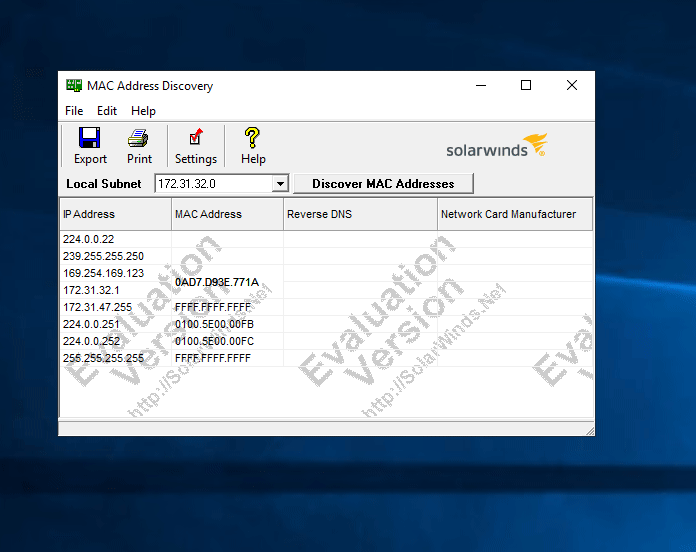

- #Scan for network device mac numbers how to#
- #Scan for network device mac numbers install#
- #Scan for network device mac numbers full#
You can post your messages in the community on Patreon.

If you have any comment, suggestion or just want to chat with us about this tutorial, It’s not complicated, but you have to learn in the correct order before trying this 🙂 If you are new to Python programming, I highly recommend starting with t his article, that will explain the basics. Uuid.getnode() returns the identifier, and you need to use join and findall to format it the correct way. The cleanest way I found to get it is like this: import re,uuid
#Scan for network device mac numbers install#
If you prefer not to install anything on your system, you can use the uuid library. For example, to get the MAC address from a remote device or to specify if you want the eth0 or wlan0 address.Īll the information is on the project website. Once installed, you can use it in any Python script like this:.The project page is here if you need more information. Then install get-mac with the pip command:.If not yet installed, you need to install pip on your system:.I prefer to keep it simple by installing get-mac and use it directly in your code. If you need to find the MAC address of a system in Python, there are several ways to do this. So, it’s a good idea to use it for your projects. Python is a popular language on Raspberry Pi, and is also available on any operating system. I will show you here two ways to do this: in Python and in a Shell script. The last scenario I can think of is if you need to get the MAC address in a script to use on many Linux systems, including some Raspberry Pi. And as you can see on the highlighted line, you can also get the Raspberry Pi MAC address this way! Get the MAC Address in a script.
#Scan for network device mac numbers full#
#Scan for network device mac numbers how to#
Here is how to do this on Raspbian Desktop: On Raspbian Desktop, you need to open a terminal before you can use it. On Raspbian Lite, you can use it once logged on.


 0 kommentar(er)
0 kommentar(er)
